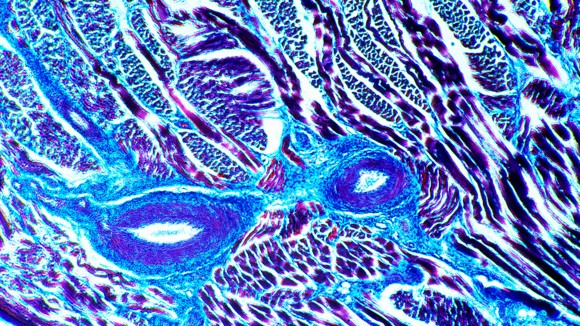Basic Introduction
Module Introduction
Molecules to Cells
Hierarchical Levels of Biological Organization
Each level of organization provides new insights into biological systems:
- DNA -> mRNA -> Molecules -> Proteins -> Metabolic Pathways -> Organelles -> Cellular structures -> Cells -> Tissues -> Organs -> Organ Systems -> Organisms -> Populations
Your medical education started with Human Structure and continues in Molecules to Cells
- In this class, you will go from asking:
What are these anatomical structures? to What is the function of these structures?

Order of Introduction of Topics in Molecules to Cells
- Human Structure
- Nucleic acid structure and function
- Gene expression
- Genetics and inheritance
- Macromolecules (Protein, Lipid, Carbohydrate) structure and function
- Histology of epithelial, connective, and muscle tissue
- Membrane biology
- Protein trafficking
- Signaling
- Metabolism at the cellular level
- Integrated metabolism at the tissue, organ, and organism level
- Metabolic disorders
- Fundamentals of nutrition
- Xenobiotic metabolism
- Molecular basis of cancer
- Organ/system-based modules

Module Objectives - What will this course teach me?
- Genetic basis of inheritance: Inheritance is based on DNA sequences passed from parents to offspring. Know the differences between types of RNA. Know the central dogma. Genes on chromosomes code for traits, following Mendelian and non-Mendelian patterns of inheritance. Variations like mutations and epigenetic changes affect gene expression.
- Macromolecules in cells and tissues: Proteins, nucleic acids, carbohydrates, and lipids are synthesized through processes like transcription, translation, and enzymatic reactions. They function in cellular structure, metabolism, signaling, and information storage.
- Energy generation, use, and storage: ATP is the primary energy currency produced through cellular respiration and photosynthesis. Energy is used for various cellular processes and stored in molecules like glycogen and triglycerides.
- Relationships among genetic expression, metabolic pathways, signaling pathways, and disease: Gene expression influences metabolic and signaling pathways, which can lead to disease when disrupted. Mutations or environmental factors can alter these interconnected systems, resulting in various disorders.
- Molecular basis of proper nutrition: Essential nutrients (vitamins, minerals, amino acids, fatty acids) are required for proper cellular function. They act as cofactors, structural components, and signaling molecules in various biochemical processes.
- Molecular basis of deficiency/overabundance leading to disease: Imbalances in nutrients, hormones, or other molecules can disrupt cellular processes, leading to conditions like vitamin deficiencies, diabetes, or toxicity syndromes.
- Role of physical findings and laboratory testing: Physical exams and lab tests help identify abnormalities in organ systems and biochemical markers. These guide diagnosis and treatment by revealing underlying physiological changes.
- Genomic and metabolic studies in personalized medicine: Analyzing an individual's genetic makeup and metabolic profile allows for tailored treatments and risk assessments. This approach enhances disease prevention, diagnosis, and therapeutic strategies.
Recommended Study Aids
- First Aid, Rx Bricks, and Scholar-Rx

Advice for Studying
- How to use a practice question: If an instructor provides or assigns practice questions, the questions are typically selected for a specific reason, i.e. emphasizing a specific point or providing examples of exam questions. If you can't answer a practice problem, don't look at the answer key!!! Use your notes, PowerPoints, textbook, etc. to find the answer to the question. Then, look at the answer key. Next, ask yourself why each incorrect answer choice is wrong using the same process you used to find the correct answer. Researching the answer rather than simply looking at the answer key will help you better learn the material.
- Get a whiteboard/dry erase board: Dry erase boards are a useful study aid for many students.
- Do not fall behind: Start with the objectives and the lectures/ILAs. Look over the material ASAP after a learning event to make sure you understand everything. The day before the exam is not the time to learn that something is unclear.
- Make your studying as active a process as possible: Work on the practice questions provided by the instructors and in review books. Do not chase the magic shortcut (There isn’t one!). Do not memorize old exams or practice questions; use them as assessment tools only. Do not hesitate to ask for help.
